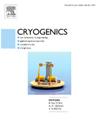Evaluation of localized mechanical properties of modified N50 welded joints at cryogenic temperature through a digital image correlation technique
IF 1.8
3区 工程技术
Q3 PHYSICS, APPLIED
引用次数: 0
Abstract
The modified N50 austenitic stainless steel has been determined to be applied as the superconducting magnet supporting material of the Chinese Fusion Engineering Test Reactor (CFETR), especially the jacket material of the CICCs of both the TF coils and the CS coils and the case material of the TF coils, which inevitably requires welding connection. The welding process generally results in welding defects as well as degradation of cryogenic mechanical properties of metallurgical inhomogeneous zones. However, limited research has been reported to demonstrate the distinct localized performance of these zones at cryogenic temperature. The present paper presents an approach to characterize localized mechanical properties of the modified N50 welds at both room temperature (300 K) and cryogenic temperature (6 K). We identified the welding zone (WZ) through metallographic analysis and then the boundaries of the heat-affected zone (HAZ) were recognized by hardness measurements at room temperature. Finally, the localized optical digital image correlation (DIC) technique was used to obtain the localized yield strength Rp0.2 and percentage extension e of the WZ, the HAZ, and the base metal (BM) at both room and cryogenic temperature, of which the observed trend is verified through comparison with that of hardness measurements at room temperature. The technique proposed provides the localized measurement of cryogenic tensile properties of weld metals and also presents experimental data on different zones of the modified N50 welded joints as a jacket material for the next-generation fusion reactors.
通过数字图像相关技术评估低温下改性 N50 焊点的局部机械性能
改性 N50 奥氏体不锈钢已被确定用作中国聚变工程试验堆(CFETR)的超导磁体支撑材料,特别是 TF 线圈和 CS 线圈的 CICC 护套材料以及 TF 线圈的壳体材料,这些材料不可避免地需要焊接连接。焊接过程通常会导致焊接缺陷以及冶金不均匀区的低温机械性能下降。然而,关于这些区域在低温下的独特局部性能的研究报告还很有限。本文介绍了一种表征改性 N50 焊缝在室温(300 K)和低温(6 K)下的局部机械性能的方法。我们通过金相分析确定了焊接区(WZ),然后通过室温下的硬度测量识别了热影响区(HAZ)的边界。最后,我们使用局部光学数字图像相关(DIC)技术获得了 WZ、HAZ 和基体金属 (BM) 在室温和低温下的局部屈服强度 Rp0.2 和扩展百分比 e,并通过与室温下的硬度测量结果进行比较,验证了观察到的趋势。所提出的技术提供了焊接金属低温拉伸性能的局部测量,还提供了作为下一代聚变反应堆护套材料的改良 N50 焊接接头不同区域的实验数据。
本文章由计算机程序翻译,如有差异,请以英文原文为准。
求助全文
约1分钟内获得全文
求助全文
来源期刊

Cryogenics
物理-热力学
CiteScore
3.80
自引率
9.50%
发文量
0
审稿时长
2.1 months
期刊介绍:
Cryogenics is the world''s leading journal focusing on all aspects of cryoengineering and cryogenics. Papers published in Cryogenics cover a wide variety of subjects in low temperature engineering and research. Among the areas covered are:
- Applications of superconductivity: magnets, electronics, devices
- Superconductors and their properties
- Properties of materials: metals, alloys, composites, polymers, insulations
- New applications of cryogenic technology to processes, devices, machinery
- Refrigeration and liquefaction technology
- Thermodynamics
- Fluid properties and fluid mechanics
- Heat transfer
- Thermometry and measurement science
- Cryogenics in medicine
- Cryoelectronics
 求助内容:
求助内容: 应助结果提醒方式:
应助结果提醒方式:


